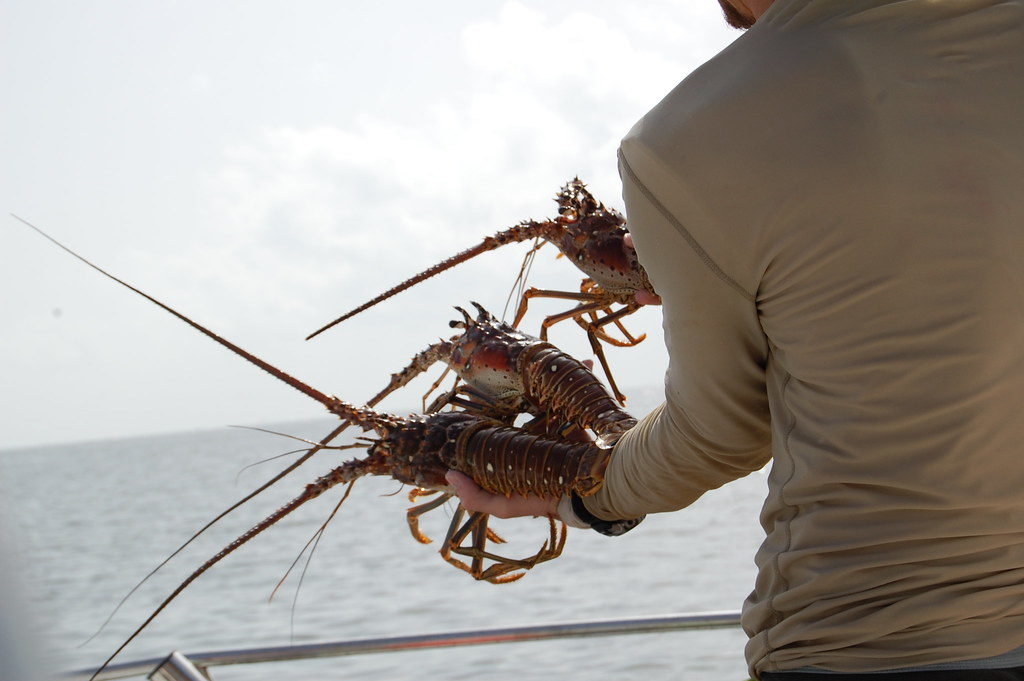By Terry Tomalin.
There’s good reason lobster divers are called bug hunters. The hardest part about catching these tasty crustaceans is finding them. Lobsters don’t stay put. They love to move around.
When the special two-day spiny lobster sport season opens each year the last Wednesday and Thursday in July, thousands of scuba divers and snorkelers head to the Florida Keys hoping to bag their limit before the regular season opens in August.
The Caribbean spiny lobster, Panulirus argus, ranges from North Carolina to Brazil. Divers call these creatures “bugs” because these crustaceans and insects are both invertebrates and come from the same phylum, Arthropoda.
The common traits lobster and insects share are jointed appendages — legs, antennae and mouthparts — hence the bug reference. They also have a rigid external skeleton that they molt or shed as they grow.
A Florida lobster looks a little like a crawfish. It doesn’t have the large claws for hunting and defense like its cousin from the state of Maine. The spiny lobster’s main defense is its speed. With one flip of the tail, these critters can take off in the blink of an eye, leaving a diver bewildered and empty-handed.
Most of the hotels in The Keys book up early, but there are other alternatives. Jupiter, Palm Beach, Fort Lauderdale and Miami all have good Florida lobstering grounds and a fraction of the divers. South Florida has another advantage — you can go lobster fishing after sundown.
Lobsters are great travelers and they tend to move around more at night. It is not uncommon to see 10, 15 even 20 of them out walking in a line across the sand. Marine biologists have tracked lobsters equipped with sonar tags for weeks at a time. One specimen walked 78 miles over a 42-day period, and then ended up in the same place it started.
READ MORE at visitflorida.com

